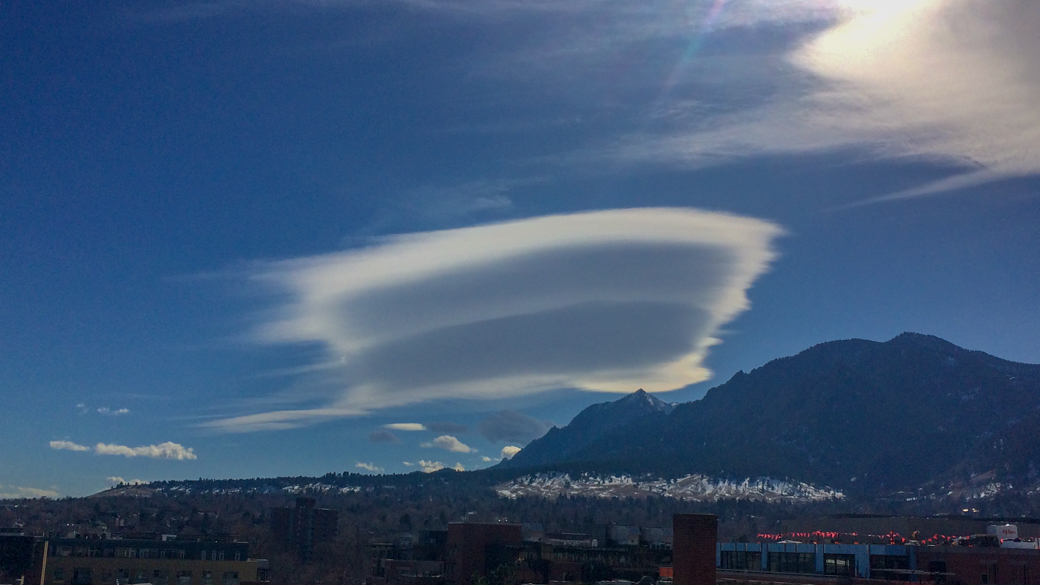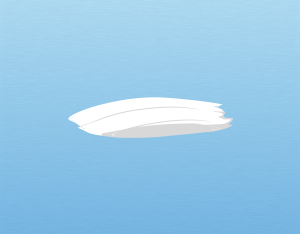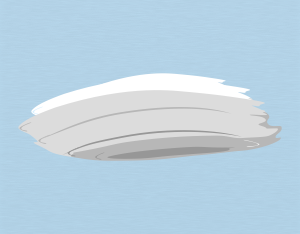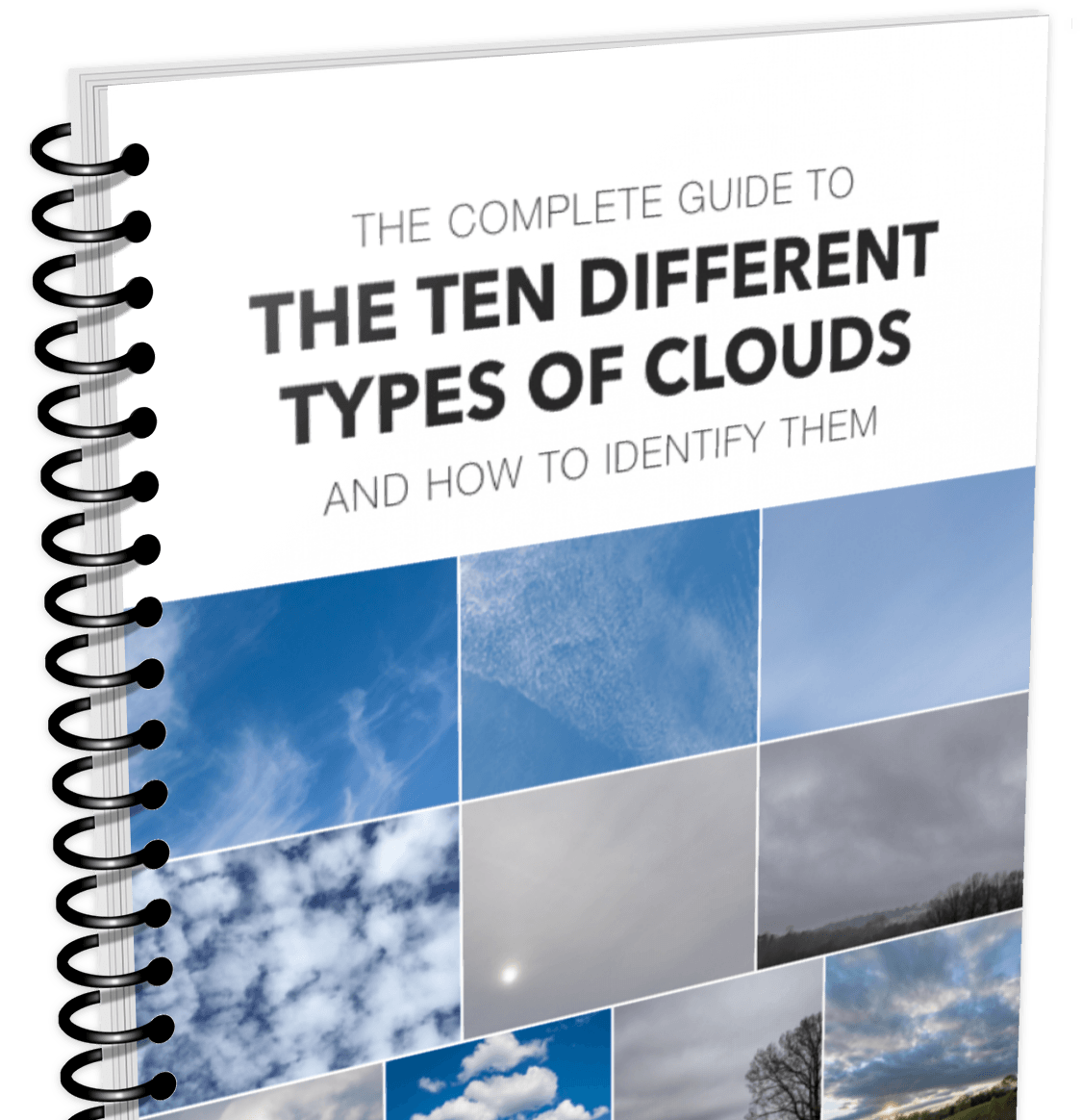Description & Characteristics. More widely known by weather hobbyists as lenticular clouds, the ‘lenticuaris’ cloud species can be found amongst three cloud types: cirrocumulus, altocumulus, and stratocumulus. Translated from latin, meaning lentil, the three types of lenticular clouds are respectively abbreviated as ‘Cc len’, ‘Ac len’, and ‘Sc len’. Lenticularis clouds can be easily depicted from other cloud species by their distinct UFO appearance and smooth edges.
The most popular lenticularis clouds are altocumulus lenticularis. These are the lenticular clouds that typically look like most like UFOs and get the most attention on social media. Stratocumulus lenticularis clouds are closer to the ground and generally have more of a smooth outlined appearance in place of the typical UFO-type look. High-altitude cirrocumulus lenticularis clouds are the least seen of the three and take on a more polished, layer-like form.
How are lenticular clouds formed? Lenticular clouds are created when an obstruction gets in the way (usually mountains) of typical airflow in the atmosphere. Mountains will disrupt the airflow, which creates turbulence and causes air to rise and fall in a wave-like pattern on the leeward side of the mountain. As this air rises and meets a layer of moist air, the air condenses and forms a cloud. Because lenticular clouds are an indication of windy conditions, airline pilots know to avoid areas where they form, as it might mean for a bumpy ride.
Lenticular clouds are also known as orographic clouds, which is a fancy word for ‘mountain’. They are also referred to as lennies in the weather community. Stacked lenticular clouds, classified as altocumulus lenticularis duplicatus, are stacked like pancakes and wonderfully photogenic. Altocumulus standing lenticular clouds are lenticular clouds that appear to remain stationary and are especially mesmerizing to watch in time-lapse video format.
As a cloudspotter, it’s easy to spot lenticular cloud formations. They’re very distinct; no other clouds look quite like them. As far as how common they are, it depends largely on where you’re located. If you don’t live in close proximation to mountains, you might think lenticular clouds are rare. But if you’re situated in a mountainous region, or on the leeward side of a mountain range, the chances of seeing lenticularis clouds increases significantly.




